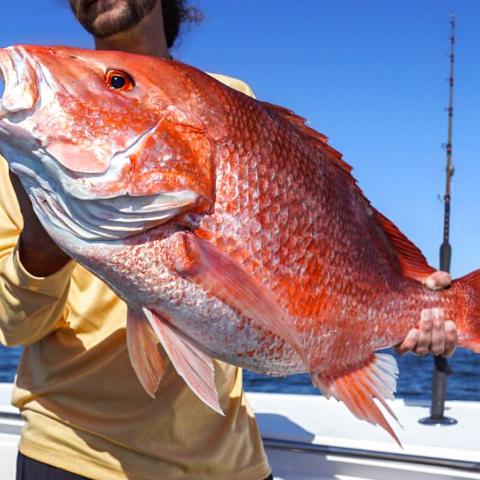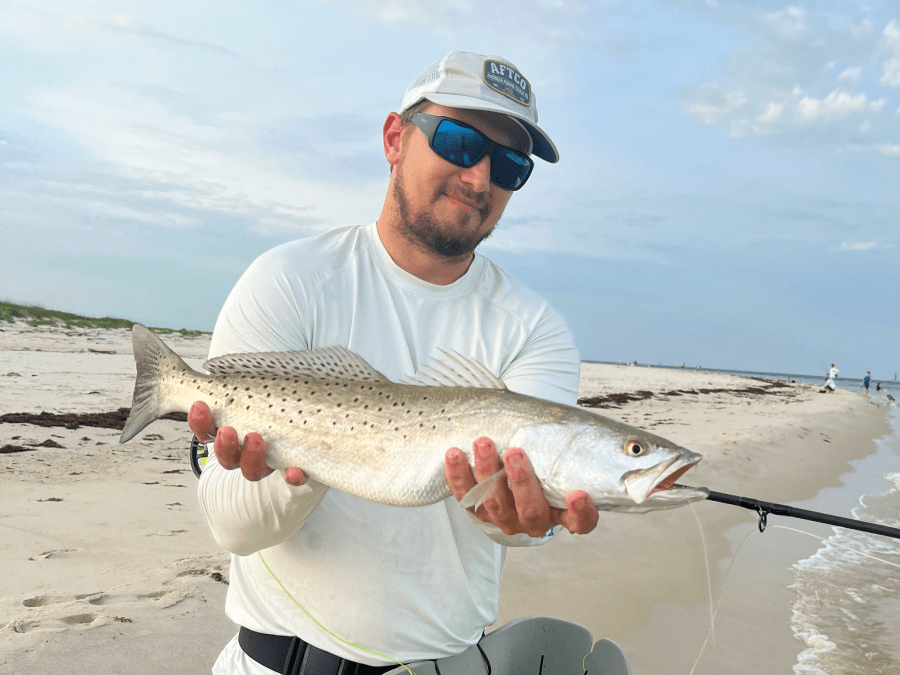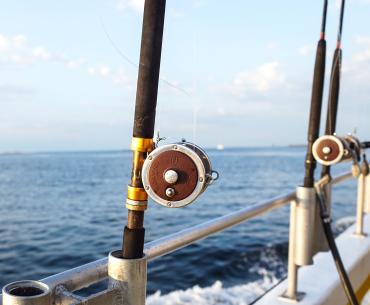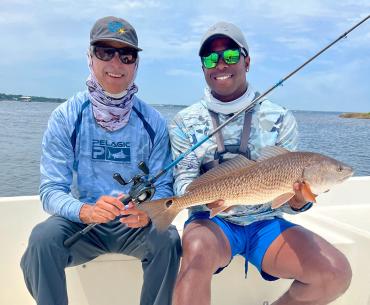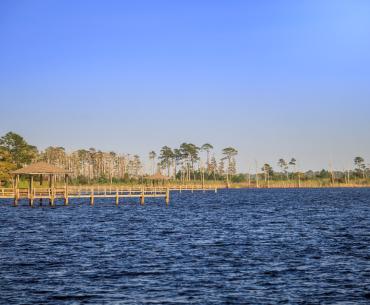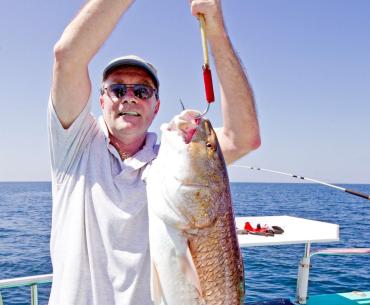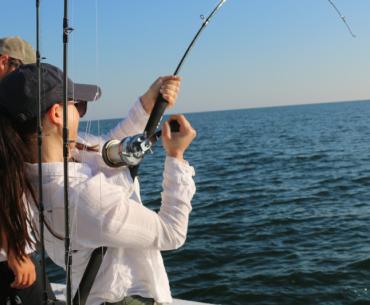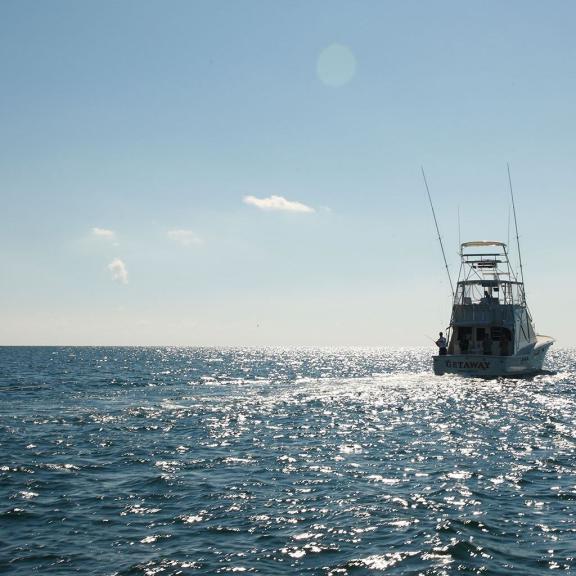
Alabama's Artificial Reef System
in Gulf Shores & Orange Beach
Alabama can boast of many things, including our unique biodiversity that ranges from the Appalachian Mountains to the sugar-sand beaches of the extraordinary Alabama Gulf Coast. Alabama can also brag about a feature that nobody else in the world can claim – the largest artificial reef system on the planet.
Alabama's Artificial Reef System

History of Alabama's Artificial Reef System
History of Alabama's Artificial Reef System
For a little history, Alabama's artificial reef building program started in 1953 when the Orange Beach Charter Boat Association asked for the authority to place 250 car bodies off the coast of Baldwin County. In subsequent early years, culverts, bridge rubble, barges, boats, and planes were added, and the liberty ships were added in 1974-75. After the U.S. Army Corps of Engineers approved an artificial reef system in 1987, the number of artificial reefs continued to grow. In 1993, derelict military tanks were deployed and are still viable today.
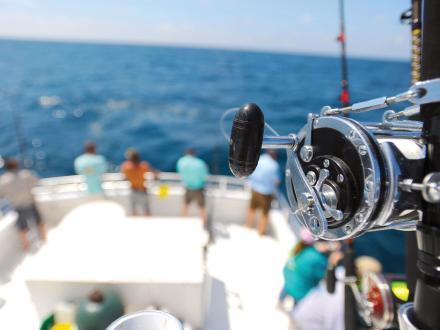
How Artificial Reefs Attract Fish
How Artificial Reefs Attract Fish
Relief from the bottom is crucial for the offshore species. During the first few years of a reef structure, numerous finfish congregate around the structure. To be a fully functioning artificial reef, the structure becomes covered in a variety of marine species, including oysters, mussels, barnacles, tunicates, sponges, and corals. That cover created by those species becomes a place for crabs, worms, blennies, sea urchins and other animals. That’s when the larger fish move in and forage on the animals connected with the reefs.

Artificial Reef System on Alabama's Beaches
Artificial Reef System on Alabama's Beaches
The latest reef zone was designated the Christopher Blankenship Reef Zone, which covers 63 square miles offshore of Dauphin Island with water depths varying from 75 to 110 feet. The zone starts about 10 miles southwest of the Sand Island Lighthouse and extends 16 miles to the southwest.
After the Blankenship Reef Zone was created, Alabama Marine Resources Division (MRD) used $4.9 million to deploy 456 pyramid-shaped modules, each 25-feet-tall and made of concrete and limestone. At the Blankenship reef zone south of Dauphin Island, 164 modules will create 123 reefs. Some of the reef sites will have two modules and others a single module. In the 24- square mile zone off Orange Beach, 64 of the pyramids will create 48 reef sites.
Farther offshore, 35 miles and beyond, 228 pyramid modules will make 172 new reef sites. At those offshore sites, the 25-foot-tall pyramids will be deployed in single and double models and provide additional structure to existing small pyramids deployed in 2004 and 2005.
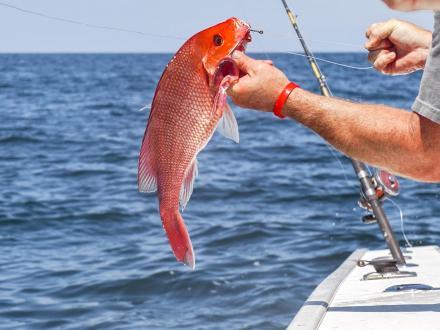
Red Snapper Reef Fishing
Red Snapper Reef Fishing
Those reefs are so productive that the latest survey of red snapper, Alabama’s iconic offshore species, indicated more than 7 million red snapper live off Alabama’s coast. That translates to 19.6 million pounds, with most of the snapper living in shallow and mid depths of 60 to 180 feet.
In the reef zones from 6 to 9 miles offshore, a total of 1,203 juvenile reef fish shelters have been deployed at numerous locations, with three to ten shelters per reef site. The modules are 4.5-foot-diameter concrete discs placed on a pedestal and embedded in a concrete slab. The modules will provide protection for juvenile fish species, including gray triggerfish, red snapper, gray snapper, and lane snapper.
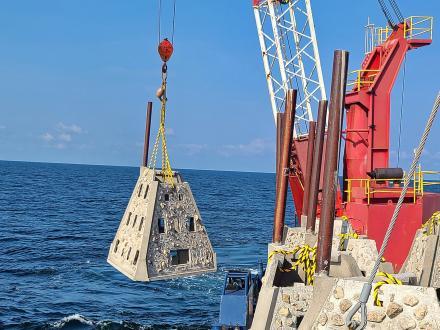
Alabama Inshore Reefs
Alabama Inshore Reefs
The MRD also started building inshore reefs for the folks who prefer to catch fish like speckled trout, redfish, and flounder. Additionally, the latest large deployment of reef material occurred in the CCA Alabama Nearshore Zone. Derelict concrete pipe had been donated for reef material. That material was carefully deployed in that zone in such a way that it provided 15 feet of relief from the bottom.
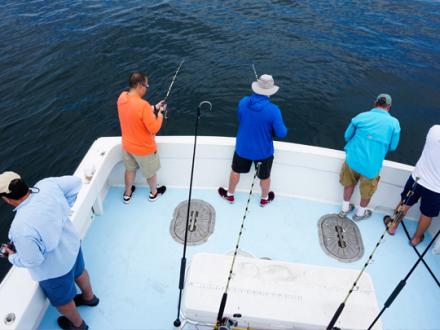
Alabama Reef Fishing License
Alabama Reef Fishing License
If you plan to venture out to Alabama's artificial reef system to fish during your time on Alabama's Beaches, keep in mind that a reef fish endorsement is required in addition to an Alabama saltwater fishing license. You can secure one here. While on Outdoor Alabama's site, check out their interactive maps and plan a trip to catch offshore species.
